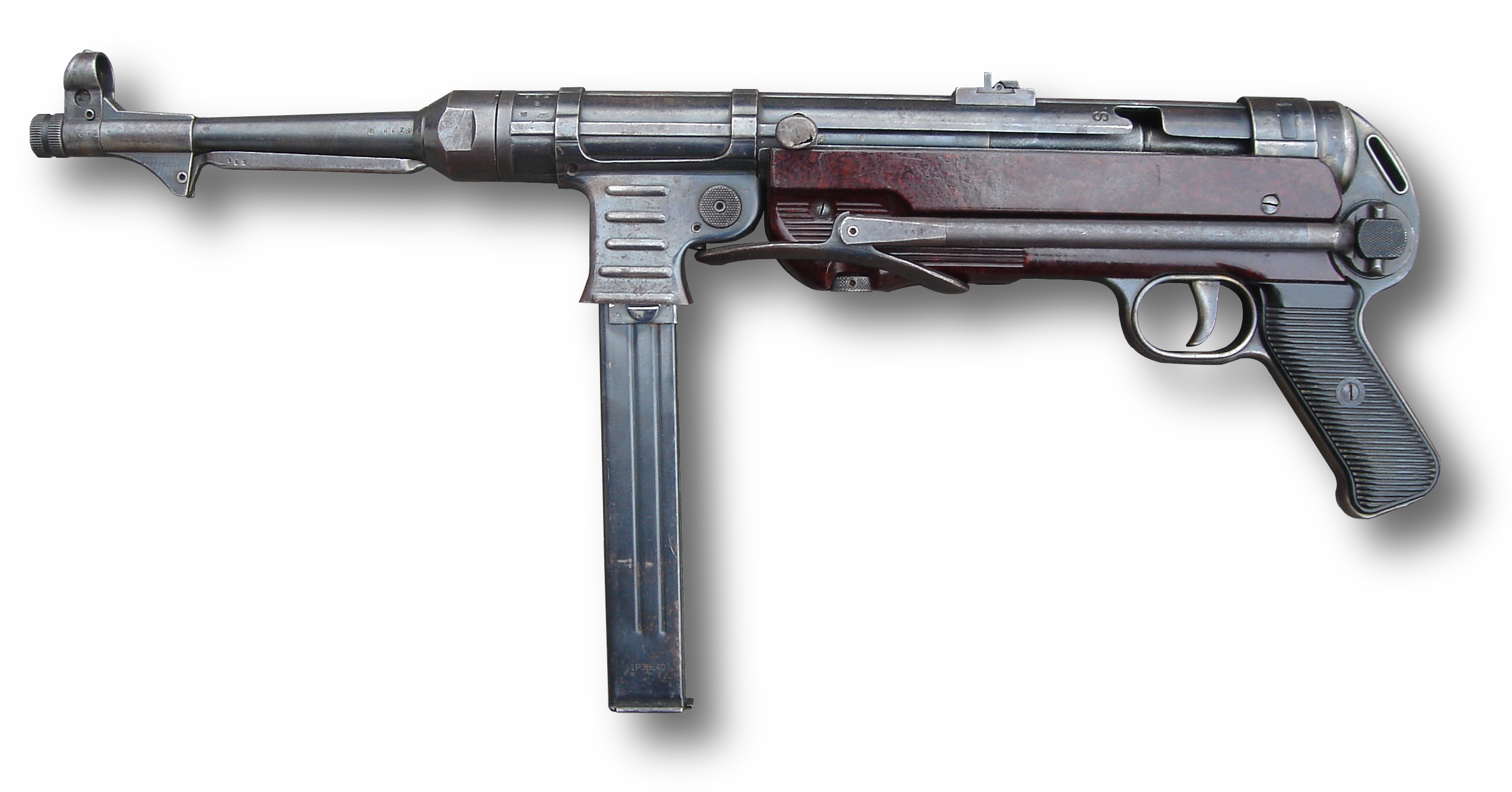The MP 40 became the most recognizable weapon of the German soldier of World War II. The nickname “Schmeisser” has become a household name. This submachine gun often appears in Soviet films to create the image of the enemy machine gunner, firing from the hip, and going into the attack at full height. In today's article you will learn why the MP 40 was not the main weapon of the German soldier and why designer Hugo Schmeisser was not involved in the development of this weapon.
The MP 40 was a simplified version of the MP 38 submachine gun. This weapon was intended to supplement, but not replace, the basic armament of the German infantryman, the rifle. The views of the German command on the use of submachine guns can be found in the 1936 article of the Journal of Military Technology: “It must be accepted that the submachine gun can give good results in close-range combat, but it is still a special-purpose weapon because its use is limited.”

The MP 38 was primarily designed for paratroopers, tankers, drivers and junior commanders. They needed a lightweight, comfortable and compact weapon for short range shooting. And MP 38 met these requirements. Its main feature was a folding buttstock. It was the first mass-produced submachine gun in the world to use such a solution, which allowed to reduce the length of the weapon for storage in limited spaces. New technologies and materials were also used to reduce the weight of the weapon. The MP 38 consisted only of metal and plastic, which reduced weight and made the manufacturing process easier.
The submachine gun had a low rate of fire of 540 rounds per minute. By comparison, the Soviet PPSh had a rate of fire of 1000 rounds per minute. Production of the MP 38 began in 1938, but this model continued to be improved. As a result, in 1940, a new version of the submachine gun was created, designated MP 40. It differed from the MP 38 in its simplified design and production process. The main difference was that the MP 40 was smooth and had no ribs on the top of the case.
It was the MP 40 that became the main submachine gun of the German army during World War II. Only from 1940 to 1944 they were produced about 706 thousand pieces. However, the main weapon of the German soldier throughout the war remained the Mauser 98k rifle. This is eloquently evidenced by the figures - by 1945, about 15 million of these rifles were produced. In addition, there were no machine gun units armed with the MP 40 in the German army. They were used only by squad, platoon and company commanders, as well as by tankers.
As with any weapon, the MP40 had some disadvantages: the long magazine, which protruded downward, made it difficult to fire from the prone position, forcing the shooter to elevate himself off the ground. The cocking handle, located on the left side of the gun, pressed against the owner's chest when the gun was carried in the “chest up” position, making it uncomfortable. The barrel of the submachine gun did not have a protective casing, which could be burned after prolonged firing. The main disadvantage was the buttstock: over time, its hinges became loose, which resulted in reduced accuracy.
But despite all the disadvantages, the MP 40 was recognized by both the enemy and Soviet soldiers. This submachine gun was especially favored by scouts and partisans. Firing from MP 40 did not demask the fighters in the German rear, as easily recognized by the characteristic sound of Soviet submachine guns. In addition, in case of exhaustion of 9-mm ammunition, there was a possibility to replenish the ammunition by taking it from the enemy. The MP 40 was also used by other units.
It is worth noting separately the nickname of the MP 40 in the Soviet army, which has survived to this day - “Schmeisser”. It was so named after the surname of a famous German gunsmith. It is noteworthy that Hugo Schmeisser had nothing to do with the development of the MP 40. The submachine gun was created by designer Heinrich Vollmer, who worked for CG Haenel GmbH.
Why then was the MP 40 called “Schmeisser”? The fact is that Hugo Schmeisser took part in the promotion of this machine gun and wrote articles about it in magazines. In addition, in 1941, the famous gunsmith developed his own version of the MP 40 submachine gun, called MP 41. The weapon was not very successful and was produced in a relatively small batch of 26,000 copies. A significant number of box magazines with the “Schmeisser Patent” mark were produced. These were also suitable for the MP 40, and the MP 40 was nicknamed “Schmeisser” based on the designer's surname.


















